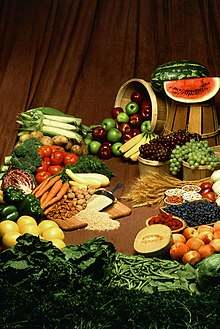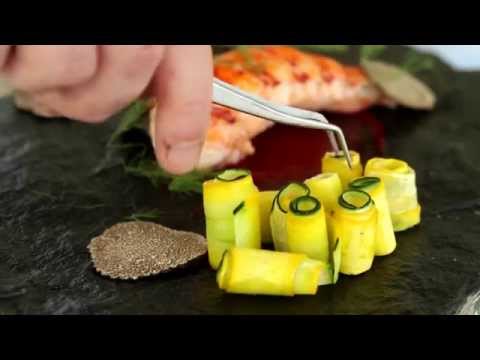- Find A Local Culinary School Today!
- Diploma programs are short, demanding and intense. In a community college setting, certificate or diploma programs impart a more basic skill-set aimed at rapid entry-level job placement.
- International culinary schools provide an adventurous, but highly career-focused experience for mastering regional cuisine. French schooling and experience is a highly regarded resume entry for chef students emulating classical French technique.

Like many other industries, careers in the Culinary Arts follow a hierarchy. Also like many other industries, there are many different paths that can be followed in an individual's career. Not every person who works in the Culinary Arts world has (or will) earn a Culinary Arts Degree. There are also positions that are specific to certain types of foodservice establishments
Academic credentials and specializations aside, the overall hierarchy of a career in the Culinary Arts industry is generally as follows:
- Table Busser (a.k.a. "Busboy") - Person who works mainly in the dining area of a foodservice establishment. People in this position are responsible for cleaning tables in between seatings of guests. Most fundamental in the position is wiping down the table to remove food scraps as well as applying a chemical sanitizer (typically a quaternary ammonium salt solution known as "Quat").
- Additional responsibilities include removing dirty dishes from diners' tables, either before or after the diner has left, and taking them to the dishroom to be washed, as well as restocking items like sugar packets, refilling salt shakers, laying out clean placesettings.
- Bussers also occasionally are expected to refill drinks for diners and similar duties, although as cross-contamination has become the focus of concern for food safety issues, this type of duty is less commonly assigned to the same people who are removing dirty dishes from tables.
- Bussers are sometimes also assigned basic food preparation duties such as peeling potatoes; this is generally done at the beginning of their shifts before they have handled dirty dishes.
- Maitre d'hotel (Master of Hotel) (a.k.a. "Host" or "Hostess" - Person who greets guests of a restaurant, manages table seating, and takes guests to their tables. This person frequently also takes an initial drink order prior to the server first arriving at their table. This position is commonly associated with restaurants where diners typically sit down to eat and are served at their table.
- Table Server (a.k.a. "Waiter" or "Waitresse") - Someone who takes the food and/or beverage orders from the guests, relays the order to the kitchen staff, and takes the food to the table. Sometimes servers have assistants to bring out food to large numbers of guests. Servers sometimes also do some food preparation beyond pouring drinks, including making side salads, plating desserts, etc.
- Bartender - Person responsible for mixing beverages, typically ones containing alcohol. This person is frequently also expected to limit the amount of alcohol an individual may be served so as to avoid problems from "overserving" (which can include unpleasant behavior, alcohol poisoning, drunk driving, and many others), which can be a liability for the people serving such a person.
- Dishwasher - Person who washes dirty dishes and makes them clean, sanitary, and available for reuse to serve more diners. This person also sometimes takes the responsibilities of a Table Busser.
- Prep Cook - Person who processes food prior to service time. Responsibilities include making sauces, cutting and peeling vegetables, baking bread, and other things which are either time consuming or most economical to prepare in large batches.
- Line Cook - Person who prepares food at the time of service. Responsibilities including processing food to order in a timely manner.
- Sous Chef ("Under Chef") (a.k.a. Head Cook) - Person who works as an intermediary between the Chef (or Kitchen Manager) and the cooking staff. This person frequently also works as a Line Cook, overseeing the production of food to ensure it meets established standards.
- Kitchen Manager - Person who oversees the entire "Back-of-House" operation of an establishment. This person typically manages scheduling and personnel, maintaining inventory, cost of food, establishing or maintaining procedures and standards.
- Front-of-House Manager - Person who oversees the operation of the dining room. This person is responsible for scheduling servers in accordance to anticipated levels of business, ensuring guest satisfaction, and manages the Servers, Bussers, Bartenders, and other people who work with the guests.
- Chef ("Chief") - Person who has earned a Culinary Arts Degree and who makes the Culinary decisions of a restaurant, such as menu, recipe adjustment, plating, etc. This is one of the highest ranking position in a restaurant, and the highest rank in the Culinary Arts world.
- General Manager - Person who oversees the entire restaurant. This person is responsible for managing the staff of a restaurant, maintaining a budget, and ensuring established standards are maintained and procedures are adhered to.
- Owner - Person who owns the business.
- New York, NY (90)
- Moorhead, MN (89)
- Phoenix, AZ (86)
- Chicago, IL (75)
- Charlotte, NC (58)
- Newport News, VA (52)
- Virginia Beach, VA (52)
- Los Angeles, CA (47)
- Atlanta, GA (45)
- Richmond, VA (44)
- Las Vegas, NV (42)
- Seattle, WA (39)
- San Francisco, CA (39)
- Boston, MA (37)
- Dallas, TX (36)
Modern Culinary Arts
students study many
different aspects of
food. Specific areas of
study include
butchery, chemistry
and thermodynamics,
visual presentation,
food safety, human
nutrition and
physiology,
international history,
the manufacture of
food items (such as
the milling of wheat
into flour or the
refining of cane plants
into crystalline
sucrose), and many
others.
Training in culinary arts is possible in most countries around the world. Usually at tertiary level (university etc.). With institutions government funded, privately funded or commercial.
About 688,000 results
- Culinary Arts: Freshman Year at The Culinary Institute of America
- 2 years ago
- 93,722 views
Go behind-the-scenes into the teaching kitchens and classrooms of the CIA. Learn more the skills culinary arts students learn ... - Cuisinart Culinary School - Episode 1
- 2 years ago
- 332,803 views
Build a solid French Culinary Foundation and you'll always cook with Confidence! Join us as Celebrity Chef Jonathan Collins ... - Career choices with a Culinary Arts degree
- 2 years ago
- 22,918 views
Chefs are front and center these days, thanks to reality cooking shows. Whether you want to work in the kitchen, run a catering ... - Culinary 411 - Basic Knife Skills
- 5 years ago
- 639,820 views
- Culinary Classroom Lesson 1: Culinary Terms
- 5 years ago
- 126,629 views
Join Chef Carrie Leonard in this first of 12 segments covering the basics of classical French cuisine. The word "chef" is borrowed ... - A Day in the Life of a Culinary Student
- 2 years ago
- 27,567 views
Professional Culinary Arts student Danielle Marullo lets us follow her through her busy yet balanced life, working The Plaza's ... - School of Culinary Arts
- 4 years ago
- 78,862 views
Welcome to the foundation of your career: award-winning, hands-on culinary training. From knife skills and butchery to global ...- CC
- Pastry Arts Program at the Auguste Escoffier School of Culinary Arts - Boulder
- 5 years ago
- 125,831 views
A short video describing the baking and pastry program at the August Escoffier School of Culinary Arts in Boulder Colorado. - CAREERS IN COOKING – Culinary Arts,Nutrition,Meal Planner,Cooking School,Recruiters,Salary Package
- 1 year ago
- 17,132 views
CAREERS IN COOKING.Go through the career opportunities of COOKING, Govt jobs and Employment News channel from ...- CC
- Food Art Garnishing Made Easy : Chef Techniques
- 3 years ago
- 4,986,432 views
Subscribe Now: http://www.youtube.com/subscription_center?add_user=Cooki... Watch More: ... - Culinary Classroom Lesson 3: Knife Skills
- 5 years ago
- 473,944 views
Basic knife skills are an important component of any culinarian's repertoire -- whether you plan to earn a living in the kitchen, ... - CULINARY ARTS programmes at Tai Poutini Polytechnic, New Zealand
- 4 years ago
- 47,108 views
- Culinary Arts Institute ... the beginning of a STORY ... your story
- 2 years ago
- 7,049 views
Your story about your journey from the french classics through the international present towards the galactic future of the art of ... - How to Cook Burgers With Coca-Cola : Culinary Arts
- 4 years ago
- 5,224 views
Subscribe Now: http://www.youtube.com/subscription_center?add_user=Cooki... Watch More: ... - Culinary Arts in the Military (Documentary)
- 3 years ago
- 1,575 views
2009 – The duties of a military chef can be as varied as a menu, from serving up rations in the dining facility to creating culinary ... - Culinary Arts School Video Tour | Le Cordon Bleu
- 3 years ago
- 133,881 views
Step inside our kitchens and see how Le Cordon Bleu leads the way in one of the country's premier culinary arts programs. - Cooking Steak With a Cast Iron Skillet : Culinary Arts
- 4 years ago
- 181,526 views
Subscribe Now: http://www.youtube.com/subscription_center?add_user=Cooki... Watch More: ...
The Culinary Arts, in
the Western world, as a
craft and later as a field
of study, began to
evolve at the end of
the Renaissance period.
Prior to this, chefs
worked in castles,
cooking for kings and
queens, as well as their
families, guests, and
other workers of the
castle. As Monarchical
rule became phased out
as a modality, the chefs
took their craft to inns
and hotels. From here,
the craft evolved into a
field of study.
A great deal of the study
of Culinary Arts in
Europe was organized
by Jean Anthelme Brillat-Savarin,
a man famous for his
quote "Tell me what
you eat, and I will tell
you what you are,"
which has since been
mistranslated and
oversimplified into
"You are what you eat."
Other people helped to
parse out the different
parts of food science
and gastronomy.
Over time, increasingly
deeper and more
detailed studies into
foods and the Culinary
Arts has led to a greater
wealth of knowledge.
In Asia, a similar path
led to a separate study
of the Culinary Arts,
which later essentially
merged with the
Western counterpart.
In the modern international marketplace,
there is no longer a
distinct divide between
Western and Eastern
foods.
Culinary Arts students today, generally speaking, are introduced to the
different cuisines of many different cultures from around the world.
Today, there are thousands of Culinary Arts schools around the world.
Additionally, most universities, as well as many smaller tertiary schools like community colleges,
offer some type of
Culinary Arts Degree,
which is technically a
Bachelor of Arts Degree.



















